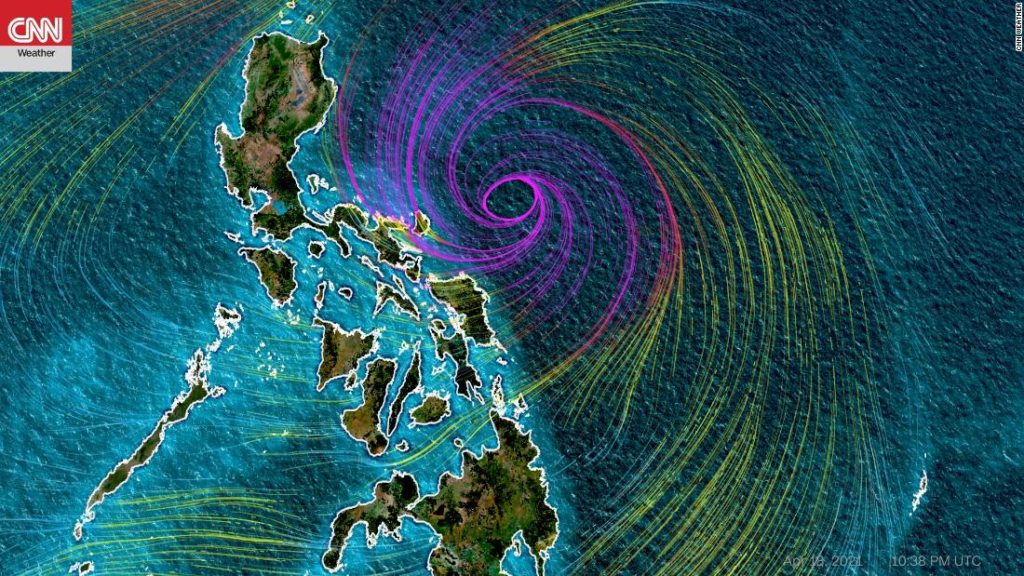Monday morning, Surigae’s maximum wind speed decreased to 140 mph (220 kph). While it is no longer a super typhoon, it is still a powerful typhoon, equivalent to a category 4 Atlantic hurricane.
This means winds over 37 mph and up to 75 mph (over 60 kph and up to 120 kph) are expected within the next 24 hours. Additionally, heavy rainfall is expected in these areas that could produce flooding, flash flooding and rain-induced landslides. Rainfall over the past two days of 6 inches (146 mm) was measured in Catbalogen and 4 inches (97 mm) in Guiuan in the Visayas province.
Super Typhoon Surigae began slowly moving toward the Philippines after it developed earlier this week, rapidly intensifying Friday, and then again Saturday. Rapid intensification occurs when a tropical cyclone strengthens 35 mph in a 24-hour period.
This rapid intensification happened because of the ideal conditions for typhoon development: Wind shear, or the changing of wind speed and direction with height in the atmosphere, has been very low. High wind shear can tear storms like this to pieces, but low shear allows them to feed off the extremely warm waters and flourish into a powerful storm.
Continued low shear and excellent outflow will allow Surigae to thrive in the warm water that is running a few degrees above normal for this time of year.
Forecasts have been consistent, keeping Surigae’s track from directly making a landfall on the Philippines. It will continue to move parallel to the central and eastern Philippines before turning northward toward southern Japan. A trough of low pressure moving through that region will likely steer the storm away from any other populated areas.
Even though Surigae remained offshore this weekend, it will need to be monitored into next week as it slowly moves to the northwest and north.
How much the storm curves will determine the impacts for northeastern portions of Luzon. Some weather forecast models show the storm getting extremely close to this section of the Philippine coast by Tuesday and Wednesday, but other models and official forecasts continue to be farther offshore with limited impacts.
CNN meteorologists Haley Brink and Gene Norman contributed to this report.
You may also like
-
Afghanistan: Civilian casualties hit record high amid US withdrawal, UN says
-
How Taiwan is trying to defend against a cyber ‘World War III’
-
Pandemic travel news this week: Quarantine escapes and airplane disguises
-
Why would anyone trust Brexit Britain again?
-
Black fungus: A second crisis is killing survivors of India’s worst Covid wave

